- what: in-situ installation showcasing botanical-themed ceramic work of Dustin Gimbel
- where: Sherman Library & Gardens
- when: May 15 through September 15, 2020
- lunch and lecture: June 26, 2020, 11:30 a.m. and tour of the exhibit by Dustin Gimbel
- other venues: Dustin will be exhibiting his work in a group show at the Ruth Bancroft Garden Friday in Walnut Creek, California, July 17, 2020
- read Sculptura Botanica part 1 here
Walking, driving, biking all over town, I probably study plants more than people. And it’s not always pretty. In fact, it rarely is. Plants are treated as the green wallpaper background to a city, awkwardly squeezed into the leftover urban spaces after capitalism gets the first pass at choice real estate. It can be dismaying to witness their rough, thoughtless treatment, but there’s some small satisfaction in knowing that gardens are where the payback happens, where plants’ central importance is acknowledged. Gardens are where plants get lifted out of the background and placed center stage, where they’re amassed in new ways to make us gasp, as if to show what just a little clever, sympathetic cooperation between people and the natural world can do.
And apart from their mission of collecting and preserving plants, isn’t a botanical garden’s unspoken message that if we pay a little attention to plants and the life they support, watch how they grow, bloom, and die, extraordinary things can happen? For a lot of us rabid plant fiends, that is enough. Public gardens, however, dealing with a more generalized customer, often add art into the mix to keep things interesting for visitors. Paradoxically, inserting art into public gardens often has the unintended consequence (for me) of relegating plants into the background again, as mere pleasant backdrop for the art work. I found the Sculptura Botanica exhibit currently at the Sherman Library and Gardens the rare exception.
The strength of the exhibit derives from the knowing dialogue between Dustin’s ceramics, which are inspired by a deep understanding of the structure and wonder of plants, his keen spatial sense as a garden designer, and the horticultural expertise of the staff at the Sherman. I thought it was a stunning example of how to integrate art into a public garden without giving the sense that the garden has been temporarily taken over as a display case. The ceramics and the plantings seamlessly work as a hand-in-glove collaboration.
Note: Everyone has to do their own risk analysis about visiting public places during these challenging times, and I can only offer my own risk calculations in that 1) I’m in the target age group for most adverse effects 2) recently post-surgery 3) and carrying the blood type that seems to have more adverse consequences too (negative). Everything I’ve read points to outdoor spaces as holding the least risk, and that has been guiding my behavior these past few months. (“We have very little evidence of outdoor transmission. It’s not zero — there are definitely cases reported — but it’s much, much lower than inside,” says Gretchen Snoeyenbos Newman, an infectious-disease physician at the University of Washington.” WaPo 6/20/20.) I visited on a Tuesday morning, and keeping a healthy distance from other visitors was no problem at all.
And with the increasing realization that, like it or not, all the world is now a garden in a “post-wild” sense, with our species’ influence felt around the globe, horticulturalists and botanists are the heroes we need. Referring to the map above, much applause is given to the following horticultural talent:
- Carol Younger, Senior Horticulturist: Tea Garden, Sun Garden, Central Garden
- Joel Friesen, Horticulturist: Tropical Conservatory, Specimen Shade House
- Dawn Mones, Horticulturist: Tea Garden, Sun Garden, Central Garden
- Tim Chadd, Horticulturist: Formal Garden, Sensory Garden
- Darla Miller, Orchid Curator: Orchid Collection, Tropical Conservatory
- Erin Aguiar, Horticulture Manager: Perennial Beds, Mediterranean Climates Garden


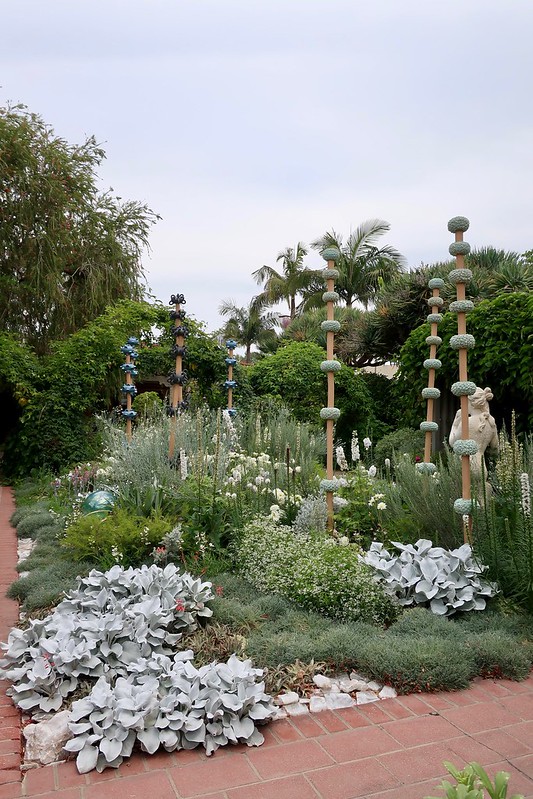
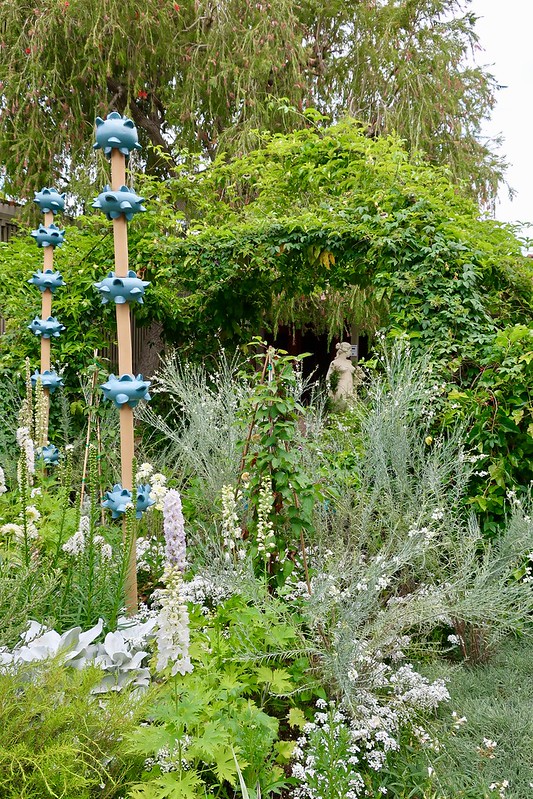




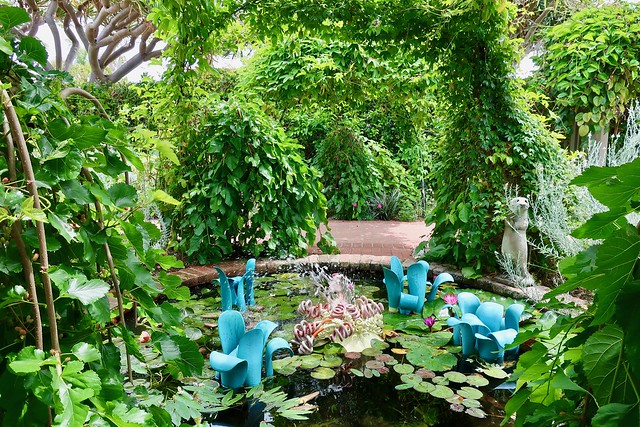
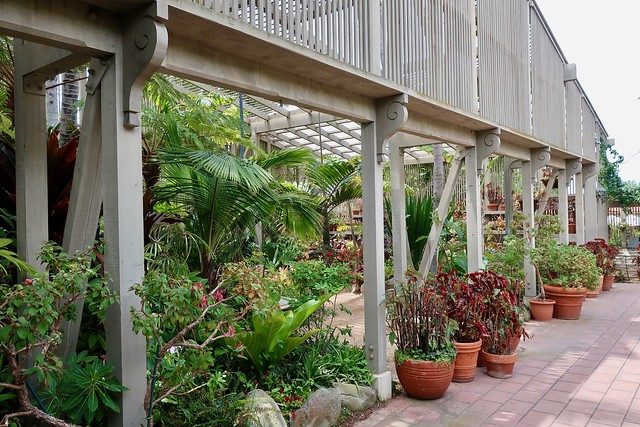


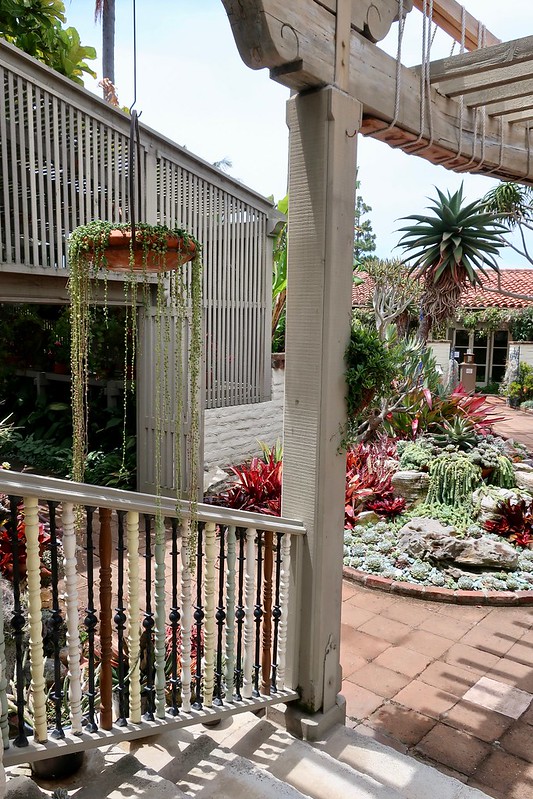
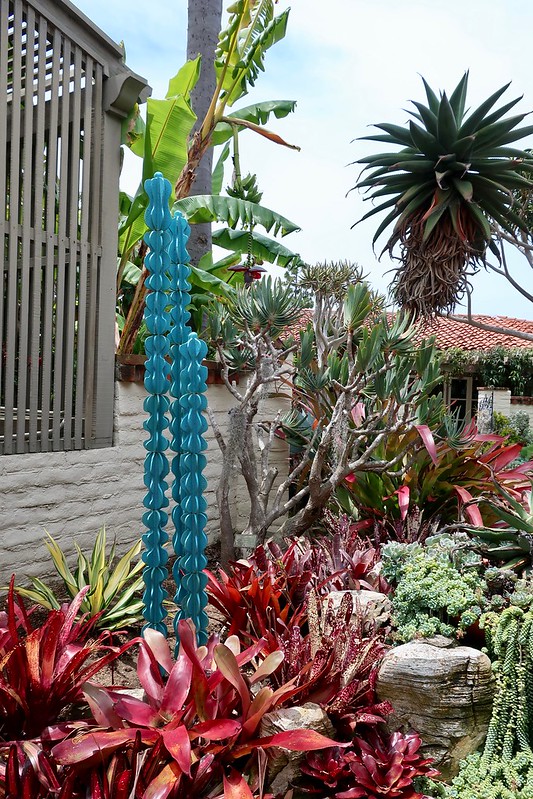
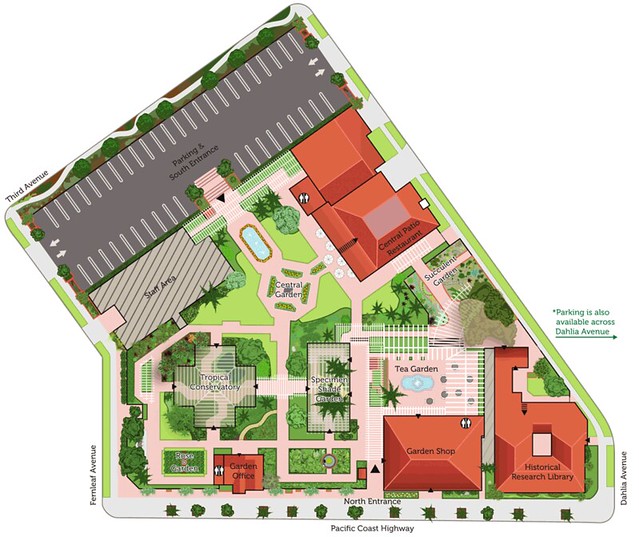
I like the blue towers, reminds me of Euphorbia cooperi which grow in segments like a tower of pears.
The planting seems quite restrained/more muted than usual. It looks great.
Maybe I’ll try to get there on a weekday; tried the grocery store this morning, but it was nerve-wracking despite everyone responsibly wearing a mask. One longs to go out, but once out there, it isn’t much fun.
Hope you are recovering and feeling very well.
Thanks for sharing another great compilation of photos from your visit as well as you POV, Denise. I’m still hoping to get there to see the exhibit, perhaps sooner rather than later.
It’s all about weighing the risks isn’t it? We are so lucky that our interests provide outdoor activities. Thank you for the additional photos!
With a large garden to look after and a lack of good public gardens to visit here, I am pretty happy to just stay home and work on my own. However, I really appreciate the horticultural teams who keep all of these public gardens looking their best, and you for giving us this virtual tour. Thanks.
Totally agree with your take on art in public gardens. And agree that this art is an exceptionally good pairing. Our Botanical Garden just reopened but have not visited yet. My husband and I are in the oldie age group and have been very cautious. Very thoughtful of you to give recognitions to the staff of the garden.